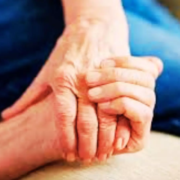Tailored information and supportive care important interventions for breast and gynaecological cancer patients: Study

The most common cancer among women is breast cancer. The fifth
leading localisation for cancer is the uterus, especially corpus uteri. More
than 3% of female cancer is caused by ovarian cancer. Summing up about 40% of
female patients with cancer are affected by gynaecological malignancies
and breast cancer. Since patients with cancer are confronted with physical
symptoms, psychological and psychosocial problems especially during treatment,
health care providers have to focus on patients’ needs. Unmet supportive care
needs can lead to reduced quality of life and decreased compliance, with
worsened outcomes. Saskia‑Laureen Herbert and team investigated supportive
care needs and quality of life among women with breast cancer and
gynaecological cancer during the period of treatment.
Supportive care can be defined as the provision of necessary
support meeting informational, physical, social, and emotional needs. These
needs can be felt differently and differ between patients. “During the time of
treatment” is defined as a visit in hospital for either surgery or
neoadjuvant/adjuvant/palliative systemic therapy, which allows distinguishing
local and systemic issues. Supportive care needs can be identified by health
care providers. Felt needs and professionally captured needs are not always
matching.
Treatment of breast cancer and gynaecological cancer shows
acute as well as long-term side effects. Severity is dependent on personal
factors such as age and comorbidities as well as the type of therapy. Patients
with breast cancer and gynaecological cancer can be affected by general
symptoms as well as specific toxicities such as pain, nausea, vomiting,
fatigue, insomnia, alopecia, stomatitis, myelosuppression, lymphedema,
premature menopause and thromboembolism caused by therapy. These sequelae
require supportive care. Besides, psychological and social complications can
also affect patients with cancer and lead to decreased quality of life.
Many patients with breast cancer suffer from distress caused by therapy,
fear of recurrence, different body image as well as changes in sexuality.
Although effective interventions improved quality of life in patients with
breast cancer during the last years there are still many issues that require
further consideration in order to improve quality of life. For patients with gynaecological
cancer, it is already known that treatment with chemotherapy still leads to a
lower quality of life and lower involvement in social activities.
Improving supportive care during treatment of breast cancer
and gynaecological cancer is of great importance concerning management of
treatment related symptoms, increasing adherence to treatment, and addressing
psychological and social aspects of cancer and cancer treatment. Hence, meeting
supportive care needs should be a part of interdisciplinary cancer care
requiring education of health care providers and patient awareness of
supportive care services.
This study had three aims: (1) to identify information and
supportive care needs and to explore to which extent they are met in patients
with breast cancer compared to patients with gynaecological cancer
during the time of treatment; (2) to examine associations between information/
supportive care needs and sociodemographic and medical parameters; (3) to
explore the associations between information/supportive care needs and quality
of life.
In this German prospective study, authors enrolled 292
patients with breast cancer and gynaecological cancer during the time of
treatment. Data on needs were assessed using instruments that had proven
feasible in earlier studies. Data on quality of life (QoL) were assessed using
the European Organization for Research and Treatment of Cancer QoL Core Questionnaire
(EORTC QLQ-C30). They investigated correlations between needs and
sociodemographic data as well as quality of life.
Among all cancer entities authors observed that 150 patients
(51.5%) showed unmet information needs, 221 patients (75.7%) showed at least
one high supportive care need, and 91 patients (31.2%) had psychological care
needs. Data showed statistically significant correlations between these needs
and sociodemographic data as well as quality of life. These correlations
generally showed small to medium effect sizes.
Older women showed less supportive care needs
(r=− 0.24; p<0.001), (r=− 0.15; p=0.010).
Furthermore, recruitment after surgery was associated with
statistically significant higher information needs (r=0.14; p=0.015), whereas
recruitment during chemotherapy was associated with statistically significant
less information needs (r=− 0.15; p=0.013).
Positive correlations were shown for the level of received
information and physical functioning (r=0.12; p=0.047), social functioning
(r=0.16; p=0.009) and global quality of life (r=0.19, p=0.002) as well as
satisfaction with information and physical (r=0.16; p=0.006), social (r=0.24;
p<0.001), cognitive functioning (r=0.14; p=0.017) as well as global quality
of life (r=0.25; p<0.001).
Negative correlations were reported for information needs
and emotional functioning (r=− 0.12; p=0.035) and global quality of life
(r=− 0.15; p=0.011).
Supportive care needs also correlated negatively with
physical (r=− 0.23; p0.001), emotional (r=− 0.35; p<0.001), cognitive
(r=− 0.24; p<0.001), social functioning (r=− 0.30; p<0.001), and
global quality of life (r=− 0.35; p<0.001).
Also, patients with at least one high supportive care need
correlated negatively with role (r=− 0.15; p=0.014), emotional
(r=− 0.23; p<0.001), social functioning (r=− 0.30; p=0.001), and
global quality of life (r=− 0.35; p0.001). There was no statistical significance
concerning cancer side. Thus, both groups are reported together. Furthermore,
there was no statistical significance concerning disease status.
In this study, authors analysed needs and quality of life of
patients with breast cancer and gynaecological cancer during the time of
treatment. Overall, the results suggest that cancer patients still experience
an unacceptable level of unmet needs which can reduce quality of life.
This data indicated that unmet needs, particularly regarding
information and supportive care, are associated with poorer quality of life. By
focusing on patient-oriented conversations, healthcare providers can more effectively
identify individual concerns and tailor support accordingly. This approach
fosters a deeper understanding of each patient’s unique needs, allowing for
more personalized care and ultimately improving patient outcomes. Based on the findings
of this study, authors assume that a more patient-oriented communication
approach as part of routine care could be beneficial.
Source: Saskia‑Laureen Herbert, A. S. Payerl,
M. Prange; Archives of Gynecology and Obstetrics
Powered by WPeMatico











